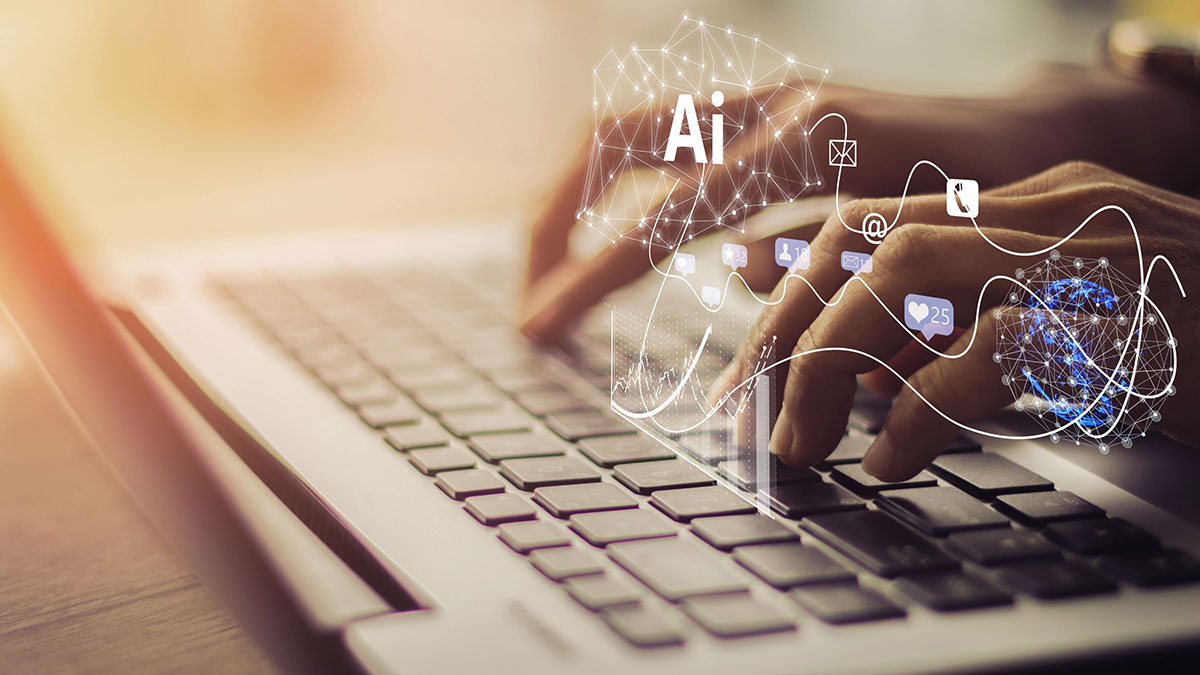- Shipments of AI PCs to Represent 22% of All PCs in 2024
- Shipments of GenAI Smartphones to Represent 22% of Basic and Premium Smartphones
- PC Shipments to Grow 3.5% in 2024; Smartphone Shipments to Grow 4.2% in 2024
Worldwide shipments of AI PCs and generative AI (GenAI) smartphones are projected to total 295 million units by the end of 2024, up from 29 million units in 2023, according to a new forecast from Gartner, Inc.
Gartner defines AI PCs as PCs that are equipped with dedicated AI accelerators or cores, neural processing units (NPUs), accelerated processing units (APUs) or tensor processing units (TPUs), designed to optimize and accelerate AI tasks on the device. This provides improved performance and efficiency in handling AI and GenAI workloads without relying on external servers or cloud services.
GenAI smartphones are designed smartphones equipped with hardware and software capabilities that enable seamless integration and efficient execution of GenAI-driven features and applications on the smartphone. These smartphones are capable of locally running a base or fine-tuned AI model that generates new derived versions of content, strategies, designs and methods. Examples of this include Gemini Nano from Google, ERNIE from Baidu and OpenAI’s GPT-4.
“The rapid adoption of on-device GenAI capabilities and AI processors will eventually become a standard requirement for technology vendors,” said Ranjit Atwal, Senior Director Analyst at Gartner. “This ubiquity will pose challenges for vendors in differentiating themselves from competitors, making it harder to create unique selling points and drive increased revenues.”
Gartner estimates 240 million GenAI smartphones and 54.5 million AI PCs will be shipped by the end of 2024 (see Figure 1). This will represent 22% of basic and premium smartphones and 22% of all PCs in 2024.
Figure 1. AI PCs and GenAI Smartphones Market Share, Worldwide, 2023-2025

Source: Gartner (February 2024)
The integration of AI into PCs is not expected to drive end-user spending beyond anticipated price increases. Business device buyers will demand compelling reasons to invest. However, it will take time for software providers to harness the power of on-device AI and clearly demonstrate its enhanced benefits.
The PC market returned to growth in the fourth quarter of 2023 after eight consecutive quarters of decline. Gartner estimates overall PC shipments will total 250.4 million units in 2024, a 3.5% increase from 2023. On-device AI should rejuvenate the marketing of PCs through 2024 and help sustain existing anticipated replacement cycles, negating some of the negative effects of a disruptive socioeconomic environment.
Smartphone Market to Return to Growth in 2024
Like AI PCs, GenAI smartphones will not bolster smartphone demand until 2027. “The enhancements to smartphones evolve the current experiences with cameras and voice integration, but these capabilities are expected by users rather than demonstrating a new groundbreaking functionality. Users have the same expectation for the functionality of GenAI on their smartphone,” said Atwal. “They are unlikely to pay a premium for GenAI smartphones without the availability of any groundbreaking applications.”
The catalyst for transformative shifts in user experience lies in the advancement of smaller versions of large language models (LLMs) specifically tailored for smartphones. This evolution will transform smartphones into even more intuitive companions capable of comprehending and responding to human language and visual cues, which will elevate the overall user experience to new heights.
The smartphone market recorded its first quarter of growth in 4Q23 after nine consecutive quarters of decline. In 2024, worldwide smartphone shipments are expected to grow 4.2%, totalling 1.2 billion units year over year. “We should not interpret the growth in smartphone shipments as a full-fledged recovery,” said Atwal. “It is more accurate to view it as a stabilization of lower level of units, which are nearly 60 million lower than in 2022.”
- การส่งมอบ AI PC ในปี 2567 จะคิดเป็น 22% ของยอดรวมทั้งหมดของ PC
- เช่นเดียวกับ GenAI Smartphone ที่มีสัดส่วน 22% ของยอดส่งมอบ Smartphone ในระดับพื้นฐานและพรีเมียม
- โดยยอดส่งมอบ PC ในปี 2567 เติบโตขึ้น 3.5% ขณะที่ Smartphone โต 4.2%
การ์ทเนอร์คาดการณ์ยอดส่งมอบ AI PC และ GenAI Smartphone ทั่วโลกในปี 2567 รวมทั้งหมดประมาณ 295 ล้านเครื่อง เพิ่มขึ้นจาก 29 ล้านเครื่องในปี 2566
การ์ทเนอร์ให้นิยาม AI PC ว่าคือคอมพิวเตอร์ส่วนบุคคลที่ติดตั้งหน่วยประมวลผลที่เป็นตัวเร่งความเร็วหรือแกนประมวลผล AI ไว้โดยเฉพาะ ได้แก่ หน่วยประมวลผล Neural Processing Unit (NPU), หน่วยประมวลผล Accelerated Processing Unit (APU) หรือหน่วยประมวลด้าน AI เฉพาะ อย่าง Tensor Processing Units (TPU) ซึ่งออกแบบมาเพื่อเพิ่มประสิทธิภาพและเร่งการทำงานของปัญญาประดิษฐ์บนอุปกรณ์ เพื่อมอบประสิทธิภาพและประสิทธิผลที่ดีขึ้นในการจัดการปริมาณงานของ AI และ GenAI โดยไม่ต้องพึ่งพาเซิร์ฟเวอร์ภายนอกหรือบริการคลาวด์ต่าง ๆ
GenAI Smartphone ออกแบบมาพร้อมความสามารถด้านฮาร์ดแวร์และซอฟต์แวร์ที่ช่วยให้สามารถผสมผสานการทำงานได้อย่างราบรื่นและใช้งานฟีเจอร์รวมถึงแอปพลิเคชั่นที่ขับเคลื่อนด้วย GenAI บนสมาร์ทโฟนได้อย่างมีประสิทธิภาพ ซึ่งสมาร์ทโฟนในกลุ่มนี้สามารถใช้งานโมเดลพื้นฐานหรือโมเดล AI เวอร์ชั่นใหม่ ที่ได้รับการปรับแต่งให้เข้ากับท้องถิ่น สำหรับสร้างเนื้อหา กำหนดกลยุทธ์ แนวทางการออกแบบและวิธีการต่าง ๆ ตัวอย่างเช่น Gemini Nano จาก Google, ERNIE จาก Baidu และ GPT-4 ของ OpenAI
นายรันจิต อัตวัล ผู้อำนวยการฝ่ายวิจัยอาวุโสของการ์ทเนอร์ กล่าวว่า “การนำโปรเซสเซอร์ AI และความสามารถของ GenAI มาใช้อย่างรวดเร็วบนอุปกรณ์จะกลายเป็นข้อกำหนดมาตรฐานสำหรับผู้ขายเทคโนโลยีในท้ายที่สุด ก่อให้เกิดความท้าทายในการสร้างความแตกต่างจากคู่แข่ง และทำให้การสร้างจุดขายให้เป็นเอกลักษณ์ รวมถึงการเพิ่มรายได้ยากขึ้น”
การ์ทเนอร์คาดว่าภายในสิ้นปี 2567 ยอดจัดส่ง GenAI Smartphone จะอยู่ที่ประมาณ 240 ล้านเครื่อง ขณะที่ AI PC จะมียอดจัดส่งที่ 54.5 ล้านเครื่อง (ดูรูปที่ 1) คิดเป็นสัดส่วน 22% ของ Smartphone ในระดับพื้นฐานและพรีเมียม และ 22% ของ PC ทั้งหมดในปีนี้ ตามลำดับ
ภาพที่ 1. ส่วนแบ่งตลาด AI PC และ GenAI Smartphone ทั่วโลก ระหว่างปี 2566-2568

ที่มา: การ์ทเนอร์ (กุมภาพันธ์ 2567)
การรวม AI เข้ากับคอมพิวเตอร์ส่วนบุคคลหรือพีซีจะยังไม่ใช่ปัจจัยหนุนปริมาณการใช้จ่ายของผู้ใช้ทั่วไปเกินกว่าการคาดการณ์ด้านราคาที่คาดว่าจะเพิ่มขึ้น ผู้ซื้อในกลุ่มธุรกิจต้องการเหตุผลที่น่าสนใจหรือดึงดูดกว่านี้เพื่อลงทุน อย่างไรก็ตามผู้ให้บริการซอฟต์แวร์จะต้องใช้เวลาควบคุมประสิทธิภาพของ On-Device AI และแสดงให้เห็นประโยชน์ที่เพิ่มขึ้นอย่างชัดเจน
ตลาดพีซีกลับมาเติบโตอีกครั้งในไตรมาสสี่ของปีที่แล้ว หลังจากลดลงแปดไตรมาสติดต่อกัน การ์ทเนอร์คาดการณ์ยอดส่งมอบพีซีโดยรวมในปี 2567 อยู่ที่ 250.4 ล้านเครื่อง เพิ่มขึ้น 3.5% จากปี 2566 โดย On-Device AI จะทำให้กิจกรรมการตลาดของพีซีกลับมาคึกคักอีกครั้งตลอดทั้งปี 2567 และรักษาวงจรการเปลี่ยนเครื่องทดแทนตามที่คาดการณ์ไว้ในปัจจุบัน พร้อมกำจัดผลกระทบเชิงลบบางอย่างจากการดิสรัปของสิ่งแวดล้อมทางเศรษฐกิจสังคม
ตลาดสมาร์ทโฟนกลับมาเติบโตในปีนี้
เช่นเดียวกับ AI PC ที่ GenAI Smartphone จะไม่ช่วยกระตุ้นความต้องการสมาร์ทโฟนจนกว่าจะถึงปี 2570 “การเพิ่มประสิทธิภาพสมาร์ทโฟนรุ่นต่าง ๆ จะเพิ่มประสบการณ์การใช้งานปัจจุบันด้วยการผสมผสานกล้องและเสียงไว้ด้วยกัน ซึ่งผู้ใช้มีความคาดหวังกับความสามารถเหล่านี้ มากกว่าฟังก์ชันการทำงานที่แปลกใหม่ โดยผู้ใช้มีความคาดหวังแบบเดียวกันต่อการทำงานของ GenAI บนสมาร์ทโฟนของพวกเขา ซึ่งผู้บริโภคไม่มีแนวโน้มที่จะจ่ายเงินเพิ่มสำหรับมือถือสมาร์ทโฟน GenAI เนื่องจากยังไม่มีแอปพลิเคชั่นแปลกใหม่ ที่ทำให้พวกเขาได้รับประสบการณ์เพิ่มมากขึ้น”
ปัจจัยเร่งการเปลี่ยนแปลงประสบการณ์ของผู้ใช้ขึ้นอยู่กับความก้าวหน้าของโมเดลดีปเลิร์นนิ่งภาษาขนาดใหญ่หรือ Large Language Model (LLM) ในเวอร์ชันที่เล็กกว่าและปรับแต่งมาเฉพาะสำหรับสมาร์ทโฟน โดยวิวัฒนาการนี้จะเปลี่ยนโฉมสมาร์ทโฟนให้กลายเป็นเพื่อนคู่คิดที่ใช้งานง่ายยิ่งขึ้น สามารถเข้าใจและตอบสนองต่อภาษาและภาพที่มนุษย์ใช้สื่อสาร ซึ่งยกระดับประสบการณ์ผู้ใช้ในภาพรวมไปอีกขั้น
ตลาดสมาร์ทโฟนบันทึกการเติบโตไตรมาสแรกไว้ในไตรมาส 4 ปีที่แล้ว หลังจากลดลงมาเก้าไตรมาสต่อเนื่อง โดยคาดว่าในปี 2567 ยอดส่งมอบสมาร์ทโฟนทั่วโลกจะเติบโตประมาณ 4.2% หรือคิดเป็นจำนวนประมาณ 1.2 พันล้านเครื่อง เมื่อเทียบเป็นรายปี “เราไม่ควรตีความการเติบโตของยอดขายสมาร์ทโฟนว่าเป็นการฟื้นตัวเต็มรูปแบบ มันจะชัดเจนกว่าหากมองว่ามันเป็นความคงที่ของตลาดในระดับที่ต่ำกว่า ซึ่งต่ำกว่าปี 2565 เกือบ 60 ล้านเครื่อง”

